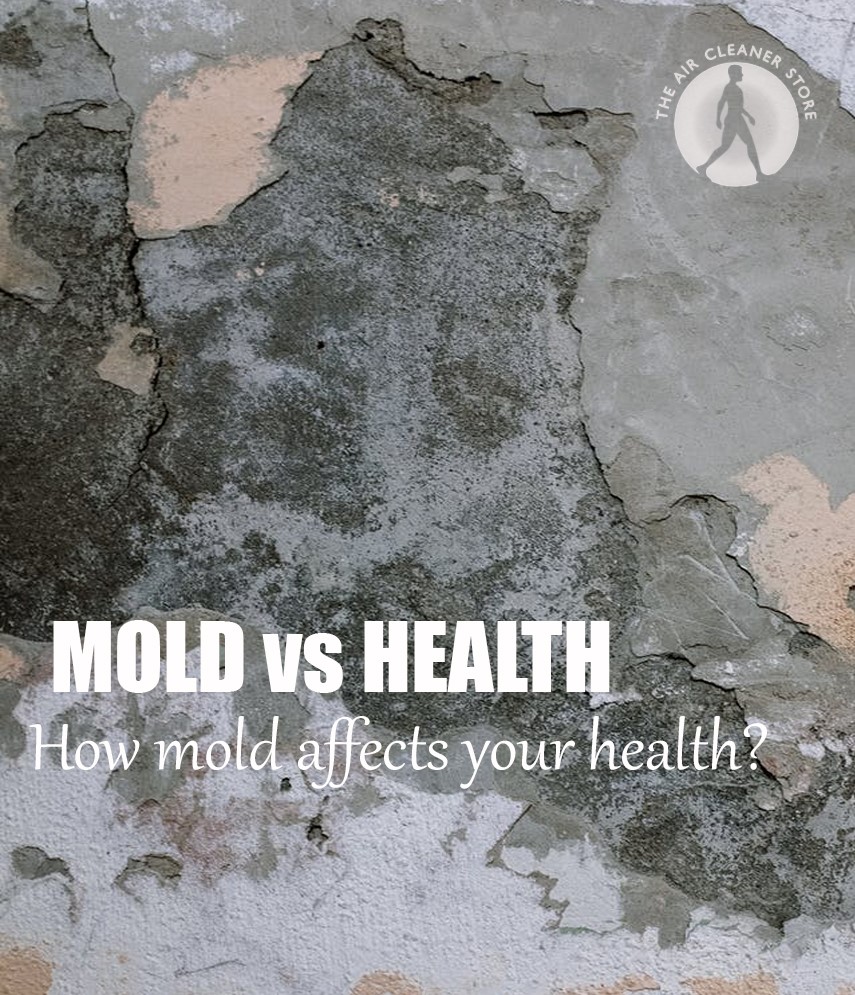The term mold is used for several types of fungi. They appear as unwanted, unappealing patches of green, brown, yellow, pink, black, smelly, fuzzy growths. Countless species and types of mold have been detected both indoors and outdoors. All about, how mold affects your health.
Although mold and its spores can appear everywhere, active mold growth requires moisture. Whether on visible surfaces or hiding behind a drywall or under carpets, indoor mold grows in the presence of excessive dampness or water. According to several research studies ,moldy indoor areas are almost always associated with high levels of:
- bacteria
- dust mites;
- bi- products of bacteria and molds, such as proteins, cell-wall particles (glucans) and volatile organic compounds (the actual cause of the musty odor associated with mold);
- airborne chemicals, gasses, and particulate matter that are released as the growing mold consumes and destroys the building materials of your home .
How mold exposure can affect your health.
Mold and fungi grow easily in indoor damp environments. People who spend time in such environments very commonly suffer from headaches, respiratory difficulties, depression, skin rashes and other physical issues.
Even though different people have different sensitivity to molds and fungi, one thing that is certain is that being exposed to such an environment is definitely not safe.
Here are some of the most common issues associated to mold:
- Allergies and Asthma
Mold is considered to be amongst one of the most common triggers for allergies and asthma. For most individuals who suffer from asthma or allergies, being exposed to mold can cause instant complications. Runny, itchy nose, sore throat, sneezing, or shortness in breath can occur after just spending a few minutes in a room that has a mold issue. If this period is extended the problem can rapidly implicate the chest, lungs and cause respiratory infection.
- Infection
Spending time in damp and moldy buildings seems to be associated with increased risk of bronchitis and respiratory infections. If it is a cause of these infections, bacteria or chemical emissions are likely to be responsible.
- Depression
Mental health issues including anxiety, brain fog, insomnia and depression have been associated with mold toxicity. The effects of mold exposure are often cumulative; that is, they start off small and become progressively worse over time.
- Mold Toxicity
Some people believe that black mold is dangerous because it releases mycotoxins. While airborne mycotoxins sometimes create illness, most cases of mycotoxicosis are a result of eating moldy food, rather than from inhaling fungal spores and mycotoxins in the home or outdoors.
The takeaway
While different types of indoor mold can cause health problems in some people, but not in everyone., long term exposure to mold in the home is unhealthy for everyone.
People who are most at risk for indoor mold related illnesses are: infants and children, older adults, those who have allergies and asthma, and people with a weakened immune system.
The primary health concerns are related to allergic response, which typically cause respiratory symptoms. People with weakened immune systems may also have the added risk of fungal infections.
Solutions
Solutions for mold presence in the home can be costly and sometimes tricky to approach.
There are several over the counter products and sprays that you can buy from your local supermarket that claim to remove certains types of mold. In some cases, they can work. The wall or certain area will appear clean after several treatments, but there is no guarantee the mold will not reappear. In some cases the mold can still be present, but just not visible.
Another solution is repainting the wall. A fresh cleaning and re-do can sometimes help to eliminate the fungi out of your home. This is not a method that assures your air is clean or safe. Reconstruction of the wall or floor is sometimes a good solution however, if the mold is a result of wet soil under the house or in the yard, over time the mold will most likely find its way back.
Sometimes, topical molds can be treated with a special cleansing solution, followed by a mold killing primer and a fresh coat of paint. Often a mold problem is harbored in a deeper layer of your home, requiring the reconstruction of walls, flooring and cabinets. Indoor mold problems are sometimes the result of wet soil under the house, or in the yard. You must discover where the mold is originating, or over time the mold will most likely find its way back. Mold remediation may be hazardous and require a skilled professional.
Regardless of which one of these solutions you choose, selecting a high quality air cleaner will provide an additional layer of protection. In a recent study by NASA, Air Cleaners, more specifically the HEPA filtration technology was found to be effective in filtering nanoparticles to 0.015 microns. This technology not only helps to manage molds, but improves the air quality in your home to a higher standard.
